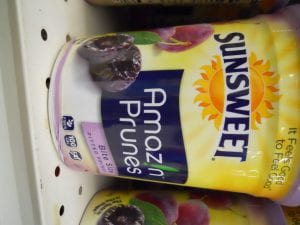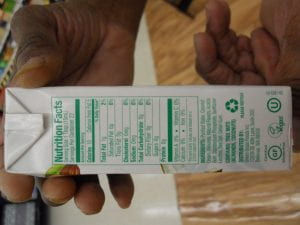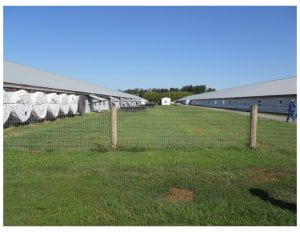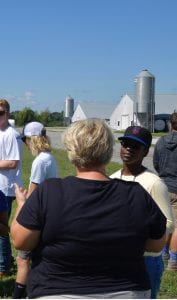On November 18, 2019 Mr. Mark DAVIS gave a lecture on the Delaware equine industry. As the Executive Director of the Delaware Harness Racing Commission, Mr. DAVIS was able the class all about the history of the industry and how it operates today.
Although Mr. DAVIS could thoroughly explain the mechanic of the industry today, that was not always the case. In fact, before he took on his current position, he, ‘knew little about horses and noting about racing’. But he did have good writing and management skills as well as a good work ethic. After, ‘putting his nose to the grindstone’, he was able to pick-up the states’ horse racing industry, which he inherited in a state of disarray.
Mr. DAVIS provided a brief history of horseracing. The practice of racing horses can be traced back to the Arabians, who held distance races over the desert. These horses, acquired as spoils of war, were eventually bred with European horses. In 1750, the Jockey Club was created in America for the management of thoroughbreds.
There are two main types of racing- Quarter racing & distance racing. There are two main breeds of American horses- thoroughbreds and standardbreds. Thoroughbreds typically race once a month with a galloping pace that places all a horses’ weight on one hoof at a time. Standardbreds are typically use for the less popular, harness racing. Harness racing has a lower point of entry and the horses race twice a week at a faster pacing/trotting pace. Because they undergo physical exertion more frequently, these horses are usually heartier, with a slower breakdown.
Mr. DAVIS presented somewhat older data from 2005, but the statistics remain relevant. Less people are going places. People are able to engage in races via computer or TV, so physical attendance at horse races has gone down. The low attendance is not however, because of a significant price barrier- 46% of horse-owners have an modest income, so the sport is not strictly reserved for the wealthy. People are spending however, as evinced by a landmark wager on October 26, 2019 in which about $4million was bet in one day on a single horse.
The horse population has also gone down within the sport. Prices, therefore, continue going up. This year marks the 1st time a horse sells for $1million. $100, 000 for a thoroughbred is not uncommon, but that same amount for a standardbred is quite unusual.
In 1934 the Delaware Racing Commission was established. In 1946 Harrington Raceway is built and continues operating as the oldest harness racing track in country. Other raceways include, the ‘Brandywine Raceway’, which closed because slots weren’t used to fund the establishment. Video Lottery is a requirement on a racetrack, thanks to the, ‘Delaware Horseracing Revitalization Act‘.
Mr. DAVIS informed use that the harness racing industry is managed by the Fair board, which consists of 88 people, as well as the Raceway and Casino Board. There are distinct boards for both the standardbred and thoroughbred horses. The Harrington Raceway runs April to October, with a 6 week summer break. Ocean Downs, a racetrack in Maryland, hosts races in the period from June to August when Harrington isn’t having races.
In previous generation, modern horseracing as we know it consisted of a trainer, and owner, and a driver who divided the profits among themselves. Today, there are owners and investors. The owners own less than 5% of a horse with a share of the profits and don’t require a license. Trainers however can earn six figures. There are also Paddock inspectors, nicknamed, ‘Pee catchers’ who analyze the urine and blood of the horses, and veterinarians, who are the only professionals in contact with the horse before races.
In Japan, regulations are more stringent, with horses brought to the track a full week before their race, the only people in contact with them are the groomer and/or trainer, and fed strictly hay and water. In the U.S., drivers, who are still exclusively male, are tested as well- the procedure is imperative when a person is travelling 35mph behind a 2000lb aluminum chariot and horse with eight other people, no one should be under the influence. Owners and groomers are tested once a month. Anyone with a license to be in contact with the horse is subject to tests, ‘out of competition’.
The horses run two miles once or twice a week. The demanding performance can tempt many of those involved in horse-racing to use the blood-building agent erythropoietin (EPO)- ‘the same drug [cyclist] Lance ARMSTRONG got in trouble for [using]’. EPO acts as a trigger to produce more red blood cells, aiding in the recovery of the animal after a race. Paddock inspectors are often checking for doping of the horses- EPO given the night after a race generates antibodies produced for recovery, which wear off before the next race, but already have an effect on the horse’s ability to recover from the previous race. Initially Bovine EPO was given to Equine animals before the switch to Synthetic EPO, of which there are now 37 types, with tests for only 2.
500 full-time jobs are generated by horseracing, which generate money via, ‘Purses’. Better horses race for more money- a better quality horse creates a larger, ‘purse’. Of a $100, 000 purse, a winner gets 50%, and while the owner/owner(s) get money, the driver and trainer receive just 5%. Race operators must also pay training bills, veterinarian bills, food, water, and more and somehow generate some salary.
The lottery money generated by the casinos is put into a large pool. With the casinos and the state operating as partners, the money is distributed between Delaware’s three casinos and the state in a, ‘weekly sweep’. Despite popular belief, Mr. DAVIS informs the class that the casino doesn’t take all the money, instead only keeping vendor fees for itself- the headline, ‘State bails out Casino’ is false. In 2015 the casino formula reapportioned the percentages each party received from the, ‘weekly sweep’, with the casino receiving 50% casino and the state receiving 30%. In 2020, the formula was re-adjusted 2% to help casinos recover, but this was just the state re-correcting the problem they initially caused with the first formula change that gave casinos 50%. The state largely uses their percentage for state infrastructure. Even though casinos receive a specific amount of money, the Horse Racing Commission still receives phone calls from betters who complain about the outcome of races.
To close out the lecture, Mr. DAVIS answers the classes questions. One question concerned the weight requirements for harness racing drivers. Mr. DAVIS informed the class that drivers are typically in the 150-300lbs weight range, but that unlike jockeys, because of where the drivers are situated, there are no real height and weight requirements for the harness racing drivers.





























































































